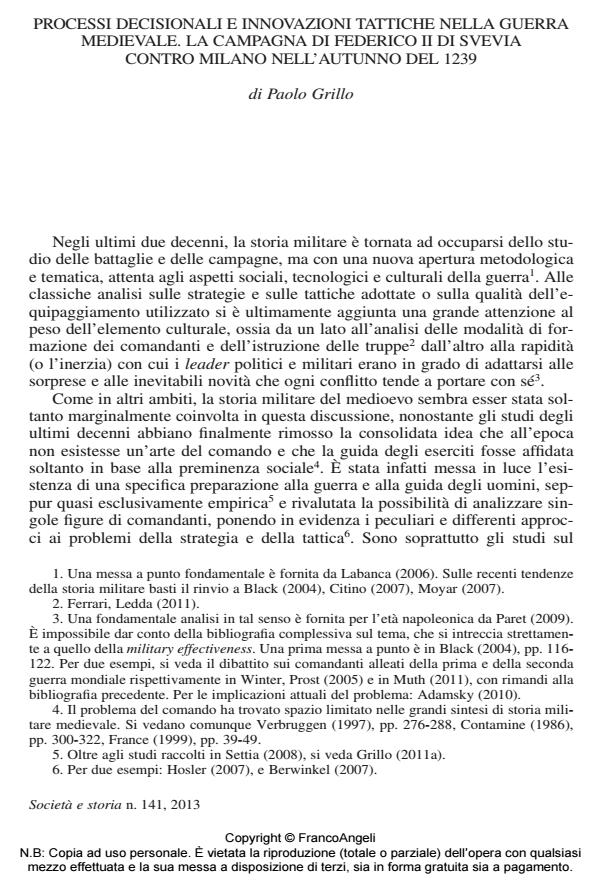Decision-making and tactical innovations in medieval warfare. The campaign of Frederick II of Swabia against Milan (autumn 1239).
Journal title SOCIETÀ E STORIA
Author/s Paolo Grillo
Publishing Year 2013 Issue 2013/141
Language Italian Pages 19 P. 427-445 File size 614 KB
DOI 10.3280/SS2013-141001
DOI is like a bar code for intellectual property: to have more infomation
click here
Below, you can see the article first page
If you want to buy this article in PDF format, you can do it, following the instructions to buy download credits

FrancoAngeli is member of Publishers International Linking Association, Inc (PILA), a not-for-profit association which run the CrossRef service enabling links to and from online scholarly content.
Contemporary historiography is developing new and sophisticated analytical tools for the study of war, but these innovations are hardly ever applied to mediaeval conflicts. This article aims to examine the importance of cultural flexibility of military commanders in the age of the communes. It will take into consideration the offensive launched by Frederick II of Hohenstaufen against Milan in autumn 1239 and the countermeasures put into action by the Milanese army. The defenders, indeed, by astutely exploiting land and field fortifications, were able to prevent the invasion and pillaging of their territory, although they numbered far fewer than the Imperial army. The success was doubtlessly due to the ability of the civic ruling class to rise to the "cognitive challenge of war". They elaborated innovative tactics allowing the Milanese forces to effectively hold the field, even though they were still smarting under the devastating defeat of Cortenuova of two years earlier.
Keywords: Medieval war; emperor Fredrick II; leadership; tactics.
- La resistenza delle città italiane agli assedi di Federico II di Svevia (1237-1250): tattiche, politiche, scelte identitarie Paolo Grillo, in SOCIETÀ E STORIA 157/2017 pp.407
DOI: 10.3280/SS2017-157001
Paolo Grillo, Processi decisionali e innovazioni tattiche nella guerra medievale. La campagna di Federico II di Svevia. Contro Milano nell’autunno del 1239 in "SOCIETÀ E STORIA " 141/2013, pp 427-445, DOI: 10.3280/SS2013-141001